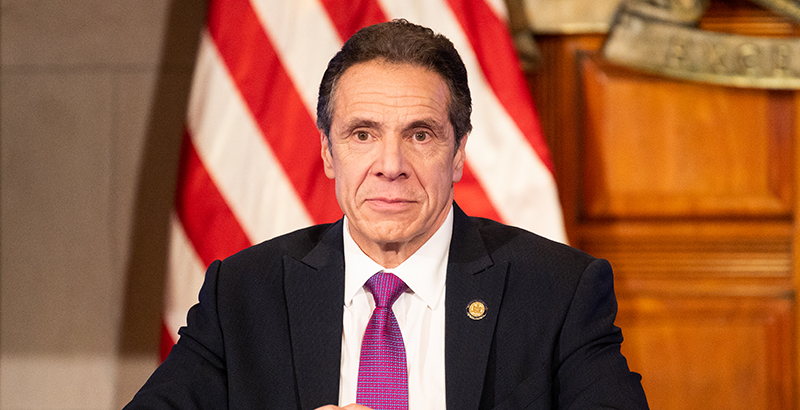Analysis: Reimagining Schools — or Reverting to Pre-COVID Classes? As States & Teachers Unions Draft Plans for an Unknown Future, Will They Even Work?

Mike Antonucci’s Union Report appears most Wednesdays; see the full archive.
The COVID-19 outbreak has led to major disruptions to the U.S. economy and its institutions, but perhaps to none more than its public schools. Businesses that can adapt to the myriad restrictions placed upon them will adapt quickly. Some will even thrive. Those that cannot will perish, leaving ripple effects across the entire populace.
The public schools are not known for quick adaptability, but neither can they be allowed to die. The abrupt switch to remote learning has had spotty results, but considering the circumstances, that’s the best we could have expected.
All stakeholders are spending their time these days trying to establish a bridge from the way we have always delivered education to a world where those practices are no longer safe.
New York Gov. Andrew Cuomo wants to “reimagine” public education, saying, “The old model of everybody goes and sits in a classroom and the teacher is in front of that classroom, and teaches that class, and you do that all across the city, all across the state, all these buildings, all these physical classrooms — why, with all the technology you have?”
More specific ideas are being floated. How about one teacher delivering online lectures to dozens, perhaps hundreds, of students while others direct small groups or provide individual attention? Suppose we forgo large group lectures entirely and divide the day into individual 20-minute one-on-one sessions with students?
The problem with these, as with all big ideas, is that we have no clue how or if they will work, even if implemented in their entirety without resistance. And we do know there will be resistance.
The reaction of New York State United Teachers to Cuomo’s trial balloon was swift and predictable. “Remote learning, in any form, will never replace the important personal connection between teachers and their students that is built in the classroom and is a critical part of the teaching and learning process,” said President Andy Pallotta.
The coronavirus hasn’t altered Pallotta’s vision for school policy. “If we want to reimagine education, let’s start with addressing the need for social workers, mental health counselors, school nurses, enriching arts courses, advanced courses and smaller class sizes in school districts across the state. Let’s secure the federal funding and new state revenues through taxes on the ultrawealthy that can go toward addressing these needs.”
The American Federation of Teachers released its own “Plan to Safely Reopen America’s Schools and Communities.” The 22-page document focuses on the health and safety protocols that should be put in place and has few recommendations for instruction. AFT does suggest class sizes of 12 to 15 students, staggered scheduling and the use of portable classrooms.
Class size reduction makes sense from a physical distancing standpoint, and unions in Illinois and Connecticut have also suggested it as a necessary move for reopening schools. They have been unclear about whether they mean splitting one class with one teacher into two sessions or hiring more teachers. Each has its drawbacks.
Splitting classes means a shorter school day for individual students. Hiring more teachers is tempting, especially from the unions’ point of view. But the lessons of California’s statewide K-3 class size reduction plan in the 1990s showed the flaws in the approach when taken quickly, massively and without preparation.
In short, when you instantly create thousands of teacher job openings, what you get is experienced teachers moving to more desirable locations. This leaves schools in less desirable locations — usually high-poverty schools — with the task of not only hiring new teachers for the smaller classes, but replacing the experienced ones who left for greener pastures.
This new pool of teacher candidates will not only be less experienced, but also less qualified than those who left, essentially offsetting any benefit smaller class sizes bring in terms of individual attention to students.
All this doesn’t even account for the human factor. How many teachers will want to return to classrooms under less than 100 percent safe conditions? Will the pool of teacher candidates grow sufficiently to replace them, even if bolstered by an increased number of unemployed people who might now consider the teaching profession?
It’s a cliché to say we’re in uncharted waters, but we really have no precedent for this. The only sensible thing is to be wary of any plan for the 2020-21 school year, regardless of its source or soundness, that fails to include contingencies in case things go wrong. Whether we end up with reimagined public education or a return to the pre-virus world may be set by circumstances, and not the best-laid plans of politicians, experts or unions.
Help fund stories like this. Donate now!

;)